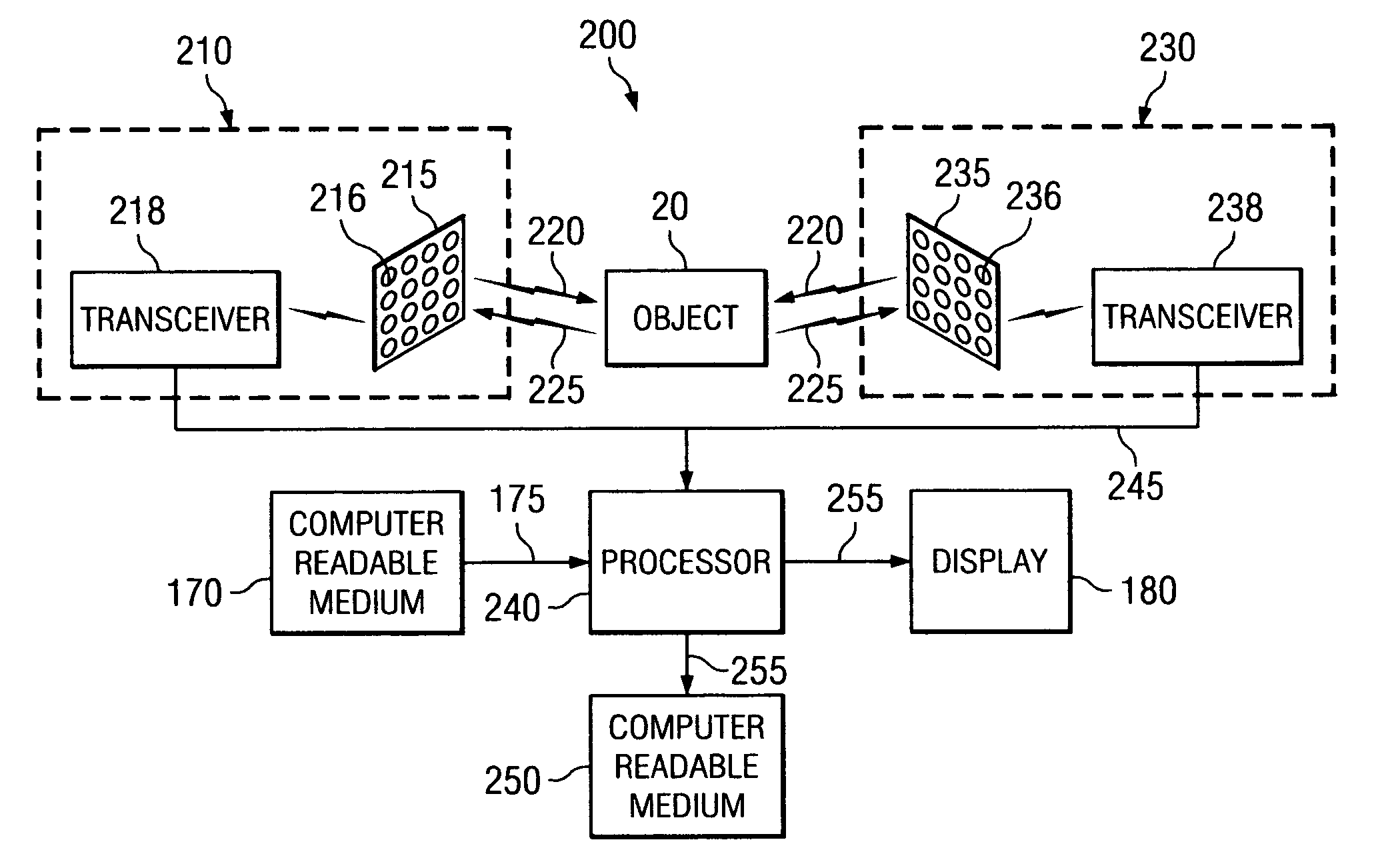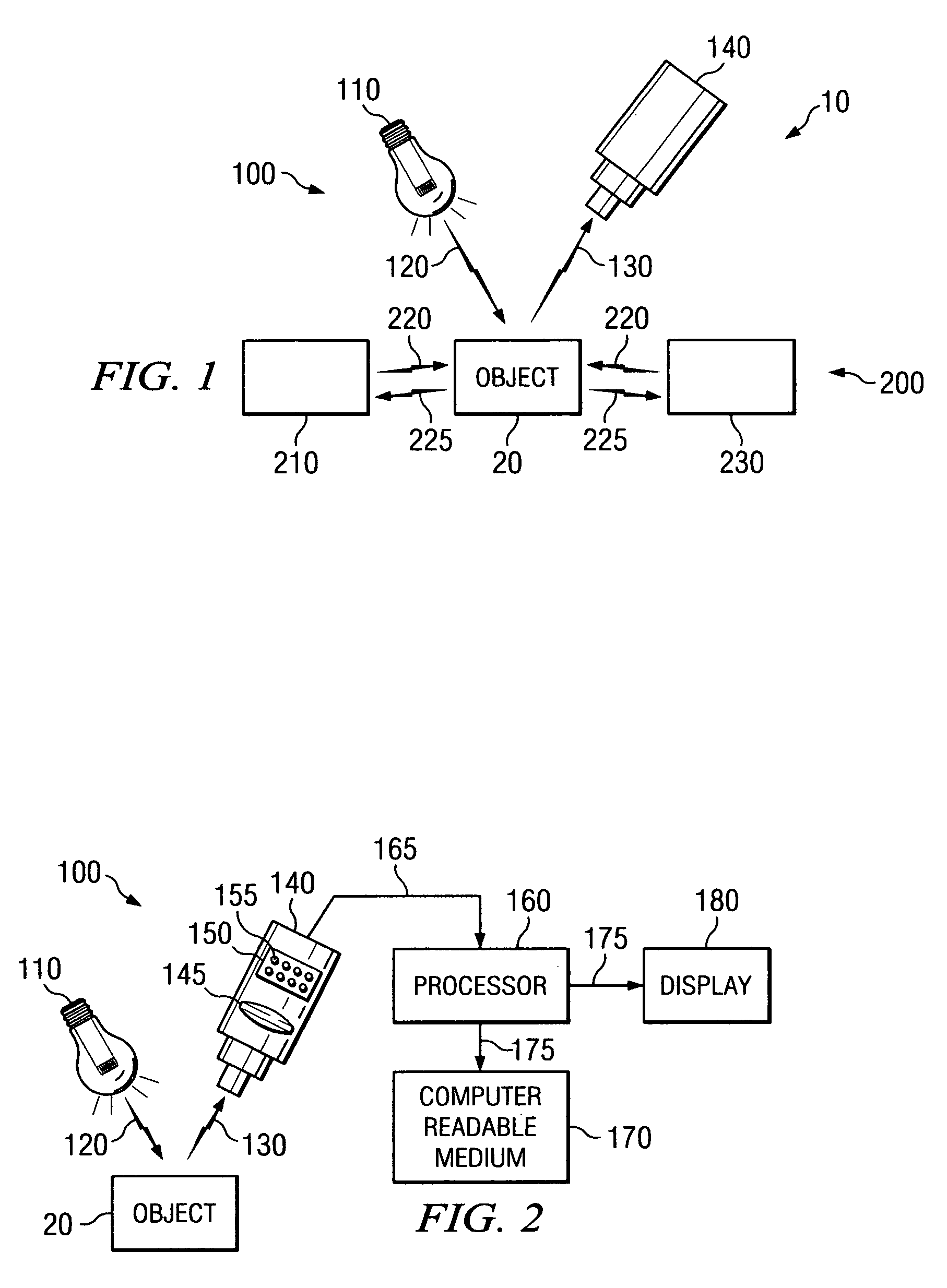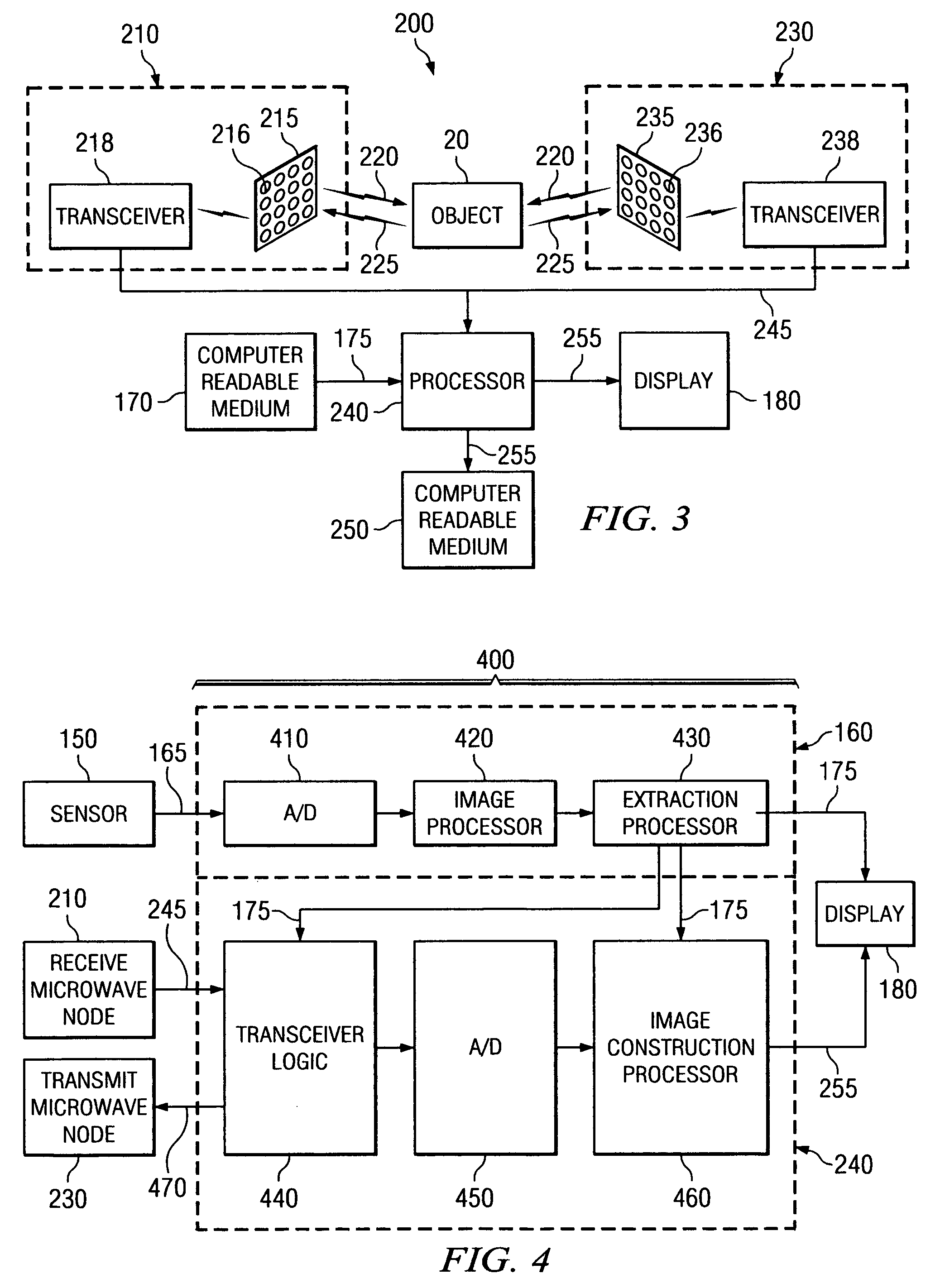Optically-augmented microwave imaging system and method
a microwave imaging and optical technology, applied in the field of optically augmented microwave imaging system and method, can solve the problems of poor resolution or processing artifacts, often computationally intensive construction process, etc., and achieve the effects of improving resolution, reducing the computational complexity of constructing the microwave image, and fast and simple algorithms
- Summary
- Abstract
- Description
- Claims
- Application Information
AI Technical Summary
Benefits of technology
Problems solved by technology
Method used
Image
Examples
Embodiment Construction
[0021]FIG. 1 is a simplified representation of an exemplary imaging system 10 in which a microwave imaging system 200 is augmented with an optical imaging system 100. As used herein, the term “microwave imaging system” refers to an imaging system operating the microwave frequency range, and the resulting images obtained by the microwave imaging system are referred to as “microwave images.” In addition, as used herein, the term “optical imaging system” refers to an imaging system operating in the visible light or near IR frequency range, and the resulting images obtained by the optical imaging system are referred to as “optical images” in order to differentiate these images from microwave images obtained by the microwave imaging system.
[0022] The imaging system 10 can be used, for example, in airport security systems for inspecting luggage or passengers, or any other microwave imaging application. The optical imaging system 100 includes a light source 110 for illuminating an object ...
PUM
| Property | Measurement | Unit |
|---|---|---|
| wavelengths | aaaaa | aaaaa |
| frequency | aaaaa | aaaaa |
| wavelengths | aaaaa | aaaaa |
Abstract
Description
Claims
Application Information
 Login to View More
Login to View More - R&D
- Intellectual Property
- Life Sciences
- Materials
- Tech Scout
- Unparalleled Data Quality
- Higher Quality Content
- 60% Fewer Hallucinations
Browse by: Latest US Patents, China's latest patents, Technical Efficacy Thesaurus, Application Domain, Technology Topic, Popular Technical Reports.
© 2025 PatSnap. All rights reserved.Legal|Privacy policy|Modern Slavery Act Transparency Statement|Sitemap|About US| Contact US: help@patsnap.com



